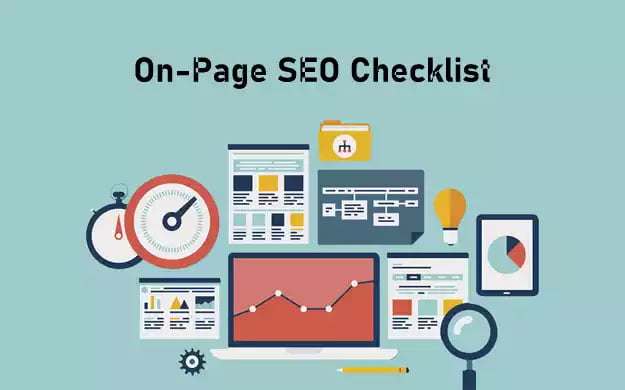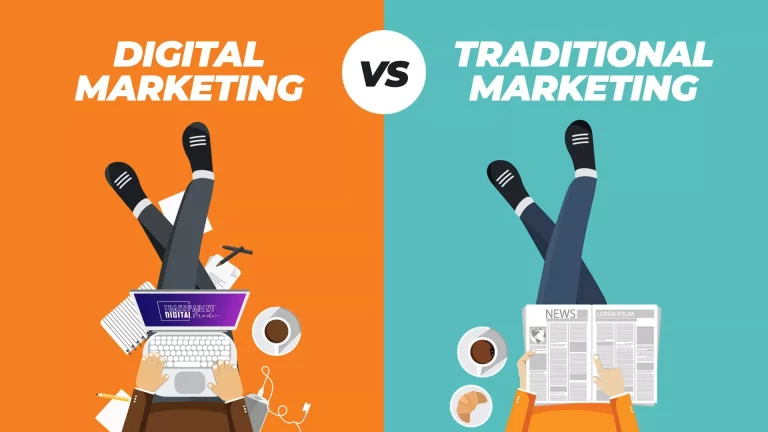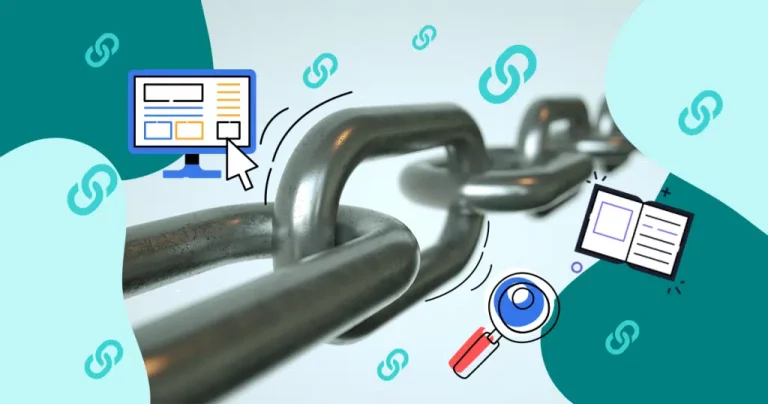Stay Ahead of the Game: The 2023 On-Page SEO Checklist for Improved Website Performance
One of the most important components of any digital marketing plan is search engine optimization (SEO). On-page optimization, which is tweaking individual web pages to rank higher and attract more traffic, is one of the most crucial elements of SEO. We’ll provide you with the definitive on-page SEO checklist for 2023 in this blog post.
Conduct Keyword Research
Conducting thorough keyword research is the first step in optimizing your web pages. Your page’s title, URL, meta description, headers, and content should all contain the terms and phrases that your target audience uses to search the internet. To locate relevant terms with large search volumes and little competition, use keyword research tools like Google Keyword Planner, Ahrefs, or SEMrush.
Optimize Your Content
For your website to appear higher on search engine results pages (SERPs), you must optimize your content. Here are some important things to think about:
- Make sure your material is interesting, useful, and pertinent to the people you are trying to reach.
- Use links both inside and outside your website to give it more context and value.
Internal and external linking are crucial elements of effective website optimization
To add more value and context to your page, you should employ both internal and external links for the following reasons:
i) Internal Links Improve Website Navigation and User Experience:
Internal links enable website visitors to move through your website from one page to another. They improve users’ experiences by assisting them in finding more pertinent content on your website. You may direct visitors to your most crucial pages and entice them to stay on your site longer by building a logical network of internal links throughout your website.
ii) Internal Links Help Search Engines Crawl and Index Your Website:
Internal links let search engines find and crawl every page on your website. All of your pages can be connected by an internal linking structure, which will make it easier for search engines to find and index your material. This might enhance the exposure and search engine rankings of your website.
iii) External Links Establish Your Website’s Authority:
Backlinks, also known as external links, are links pointing to your website from other websites. Your website gains authority and credibility when it is linked to other respectable websites. This might enhance the exposure and search engine rankings of your website.
iv) External Links Provide Additional Context and Value:
External links can give the content on your website more context and worth. You can give your viewers more details and perspectives about your material by linking to reliable sites. This can increase the worth and authority of your website while also enhancing the user experience for your site’s visitors.
v) Internal and External Links Help to Keep Your Website Fresh:
You can maintain the content of your website current and fresh by including both internal and external connections. While external links can give access to the most recent news, insights, and trends in your industry, internal links can help visitors stay engaged with your content.
How to do internal and external linking
Here are some tips on how to do internal and external linking:
Internal Linking:
- Establish a logical site structure: Ensure that your website has a structure that is both clear and logical, with related content grouped together. It will be simpler to develop a natural and simple internal connection structure as a result.
- Use evocative anchor text: Create evocative anchor text that completely captures the essence of the linked page. This will make the linked page’s purpose and subject more clear to users and search engines.
- Link from a page with high authority: Link from pages on your website with high authority to pages with lesser authority to raise the visibility and search engine rankings of the latter pages.
- Link to pertinent and related content: Make sure the pages being linked to are pertinent to and related to the information on the source page. This will enhance user experience overall and assist visitors in learning more about the subject.
- Do not overlink: Do not overlink or overuse links on a single page. The user experience and search engine rankings of your website may suffer as a result.
External Linking:
- Link to credible sources that are pertinent to your material. Doing so will give your article more context and worth. This will support the credibility and authority of your website.
- Use evocative anchor text: Create evocative anchor text that completely captures the essence of the linked page. This will make the linked page’s purpose and subject more clear to users and search engines.
- Verify any broken links: Check your external links frequently to make sure they are still operational. The user experience and search engine rankings of your website may suffer as a result of broken links.
- Use “nofollow” tags: When linking to a website that you don’t necessarily support but would like to reference, use “nofollow” tags. The search engine rankings of your website will be safeguarded by doing this.
- Linking to spammy or low-quality websites should be avoided because doing so can harm your website’s credibility and search engine rankings.
Linking both internally and externally is crucial for successful website optimization. These pointers will help you build a natural and intuitive internal linking structure and link to reliable, pertinent external resources to raise the user experience and search engine rankings of your website.
- To format your text and make it easier to read, use header tags (H1, H2, and H3).
- Make sure your material is readable and search-engine-optimized by using a decent mix of keywords and everyday language.
- To help search engines grasp the information, use alt tags for your photos that are evocative and keyword-rich.
Meta Description Audit Checklist
Here’s a Meta Description Audit Checklist that can help you optimize your website’s meta descriptions:
- Make sure each page has a distinct and pertinent meta description.
- Make sure your wording is convincing and detailed so it accurately conveys the page’s information.
- To avoid being shortened in search engine results pages (SERPs), keep your meta description to around 155 characters.
- Don’t fill your text with keywords; instead, use relevant ones.
- To persuade visitors to visit your website, utilize a call-to-action (CTA).
- Across pages, avoid using the same meta description again.
- Make sure the meta description appropriately summarizes the page’s content to prevent users from being misled.
- To improve how your meta descriptions show in SERPs, use Schema.org markup.
You may raise the caliber of your website’s meta descriptions and raise click-through rates from search engine results pages by using this Meta Description Audit Checklist.
Technical SEO
Making sure that your website is optimized for search engines is the main goal of technical SEO. Here are some important things to think about:
- Your website must be mobile-friendly and responsive in order to be successful.
- Examine your website’s speed using a tool for measuring it, like Google’s PageSpeed Insights, and make any necessary adjustments.
- It is essential to install an SSL certificate on your website in order to promote visitor trust and secure communication.
- Make sure to use headers, subheadings, and paragraphs with a clear hierarchy to improve readability on your pages.
- To correctly describe the content on each page, include significant keywords in your website’s metadata, such as title tags and meta descriptions.
User Experience
- Ranking criteria in SEO, and UX, are gaining paramount significance. Take note of these vital factors:
- Quick and easy access to information is crucial, so ensure your website is user-friendly.
- Writing in a language that is easy to comprehend is imperative to convey your message effectively.
- Make your content more thrilling for readers by splicing in videos and images.
- Your website’s appearance should be attractive and have a uniform design.
- Your website’s social sharing icons can motivate visitors to share your content on social media, making it more widespread.
Why Audit Your Page Titles?
One of the most crucial on-page SEO components that search engines utilize to comprehend the content of a web page is the page title. It is crucial to make sure that your page titles are effective and optimized because they give potential customers their first impression of your website. The user experience, SEO, and overall performance of your website can all be enhanced by performing a page title audit.
Here are some reasons why auditing your page titles is crucial:
i) Improve Click-Through Rates
When your web page shows in search engine results pages (SERPs), the page title is the first thing visitors see. Your page title’s ability to urge readers to click over to your website can greatly increase your click-through rates (CTR) and increase website traffic. You may raise your CTR and enhance the functionality of your website by analyzing your page names and improving them for relevance, distinctiveness, and user intent.
ii) Optimize for User Intent
Search engines are putting more and more effort into interpreting the purpose of a user’s search query and returning the most pertinent results. You can check that your page titles accurately reflect the content of your web pages and correspond to the user’s purpose by auditing them. This can improve your SERP positioning and drive more targeted traffic to your website.
iii) Improve Search Engine Rankings
One of the most important on-page SEO components that search engines employ to understand the content of a web page is the page title. You may increase the visibility of your website in organic search results by evaluating your page titles and optimizing them for pertinent keywords and user intent. This may result in more visibility, improved search engine results, and more potential clients.
iv) Boost Brand Awareness
A chance to promote your brand and leave a lasting impression on potential visitors is provided by your page title. You may increase brand recognition and set your website apart from rival websites by evaluating your page names and adding your brand name or unique selling proposition (USP). This can help you build a solid internet presence and gradually win over devoted clients.
v) Ensure Consistency Across Pages
Both SEO and web design depend heavily on consistency. You can make sure that the page titles on all of your website pages represent your brand messaging and offer a consistent user experience by auditing your page titles. This can enhance your performance overall, help you establish trust with users, and make your website easier to navigate.
Additional factors to consider when optimizing your web pages
- Use schema markup to make your content easier for search engines to interpret and to increase your presence in search results.
- Compressing your photos and giving them meaningful filenames and alt tags will help you optimize them for search engines.
- Use internal linking to make it easier for users to explore your website and find pertinent material.
- By utilizing legible and simple-to-read typefaces and incorporating alt language for photos and videos, you can make sure that everyone can use your website, even visitors with impairments.
In conclusion, any digital marketing strategy must include on-page SEO. You can make sure that your web pages are optimized for search engines, user experience, and accessibility by using our comprehensive on-page SEO checklist for 2023. Our will lead to better rankings, more traffic, and higher engagement.








Hey There. I found your blog using msn. This is a really well written article. I will be sure to bookmark it and return to read more of your useful info. Thanks for the post. I will certainly comeback.